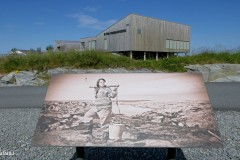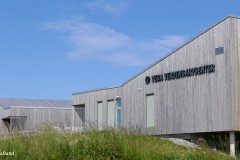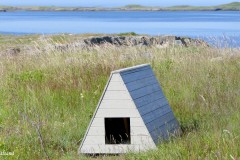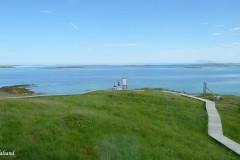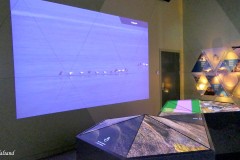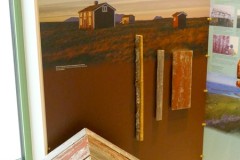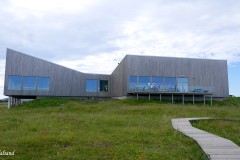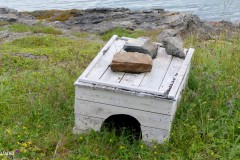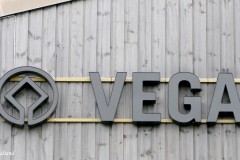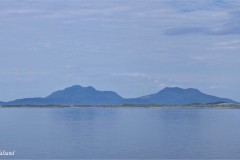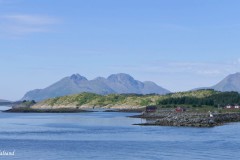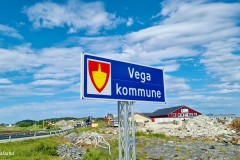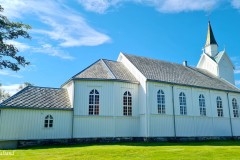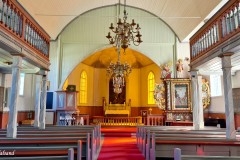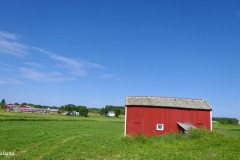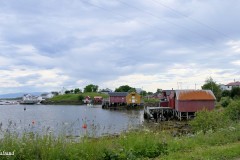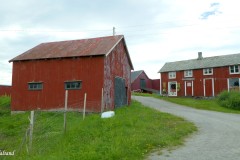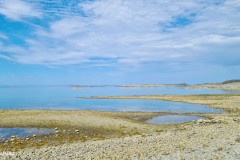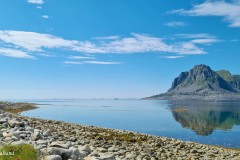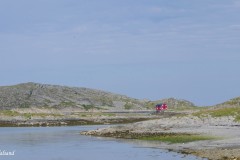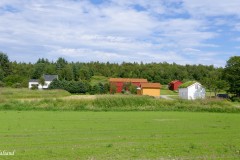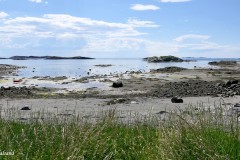Vegaøyan – The Vega Archipelago consists of 6,500 islands, islets and reefs on the Helgeland coast of Norway. The archipelago and human activity over the millennia is a cultural heritage for all of humanity.
Official facts
- Official title: Vegaøyan – The Vega Archipelago
- Country: Norway
- Date of Inscription: 2004
- Category: Cultural
Why visit Vega?
The oldest traces of human activity stretch back 10,000 years, to the Stone Age. Today there are approximately 1,200 permanent residents on the islands, or should we rather say the island. Because nowadays it is almost only the largest island, Vega, that has a permanent settlement. Of the large number of islands, settlements have been found on 80. Fishing and agriculture have been the basis of life for most people.
The island community can be found west of Brønnøysund on the Helgeland coast. The island of Vega and the nearby Søla have mountains of dimensions that rise straight out of the sea. The other islands are fairly low. In this sense, Vega’s geography, and with its human activity, resembles many of the archipelagos in this picturesque part of coastal Norway. However, what makes Vega stand out as very special is the interaction between people and eiders.
Every spring, when the birds move in from the sea to nest, people have arranged for nesting places in the form of special houses. What the eider does is to fill the nest with down, so that the eggs and then the young birds have a soft bed. When the eiders leave the nests, people collects the down, cleans it, cards it and sells it. This is a 1,500-year-old tradition that is actually still being maintained. In our time, it is an important point that this has been a woman’s profession – an economically lucrative profession as well. Gathering down could provide the same income as the all-male Lofoten fisheries.
This is it
That is why the world heritage status is so important. It will help to keep the tradition alive. For us, a visit to Vega will give an insight into the nature, the society and this thousand-year-old tradition that UNESCO made a World heritage site in 2004.
What does UNESCO say?
UNESCO’s World Heritage Commission decided in 2004 to add Vegaøyan to its list. It contains over a thousand different sites to take care of humanity’s common cultural and/or natural heritage. The listing of Vega satisfies criterion five of the convention.
(v) to be an outstanding example of a traditional human settlement, land-use, or sea-use which is representative of a culture (or cultures), or human interaction with the environment especially when it has become vulnerable under the impact of irreversible change;
UNESCO
UNESCO’s brief description of “Vegaøyan – The Vega Archipelago“, entry no. 1143 on the World Heritage List:
A cluster of dozens of islands centred on Vega, just south of the Arctic Circle, forms a cultural landscape of 107,294 ha, of which 6,881 ha is land. The islands bear testimony to a distinctive frugal way of life based on fishing and the harvesting of the down of eider ducks, in an inhospitable environment. There are fishing villages, quays, warehouses, eider houses (built for eider ducks to nest in), farming landscapes, lighthouses and beacons. There is evidence of human settlement from the Stone Age onwards. By the 9th century, the islands had become an important centre for the supply of down, which appears to have accounted for around a third of the islanders’ income. The Vega Archipelago reflects the way fishermen/farmers have, over the past 1,500 years, maintained a sustainable living and the contribution of women to eiderdown harvesting.
UNESCO’s brief description
The World Heritage Centre
Any World Heritage site with respect for itself and its cultural or natural heritage must have a World Heritage Centre. The one at Vega opened in 2019 with a magnificent location and in a great building. Inside, we can wander freely through an exhibition of the history of Vegaøyan from the Stone Age up to our time. A separate department deals with other world heritage sites. (By the way, Vegaøyan is the plural tense of Vega, meaning Vega islands.)
The centre is very good with extensive use of modern technology. Also, not least, we get to feel and touch the eider down itself, we get to try to card it, or harp it, as they say here. Old photos in combination with new ones show how older buildings on the islands have been taken care of. Large posters tell about the lives and work of women in the eiderdown industry, which was an independent reason why Vegaøyan became a World heritage site.
Around the centre building, a wooden plank walkway has been created between different stations. There seems to be more to come here.
Around Vega Island
Sandalsand’s visit to Vega in 2023 was of the short kind. We travelled by a free ferry, toiled down the tarmac and left only money at the World Heritage Centre. Many others do the same, and it is of course demanding for a small island community of 1,200 inhabitants. I hear others spend a lot of time here, cycle around the fairly flat landscape, park their motorhomes at a campsite, or pay for accommodation elsewhere. They shop, eat in restaurants and leave money behind. That is good, but Sandalsand has nothing against tourist tax in one form or another, cf. the debate that has been going on in recent years.
Visit Vega gives you a wealth of information and ideas for what you can do. The site is unusually well made and visually appealing. My impression is that Vega is sought out because it is located in the sea, because it is so rural and remote, that it is a World heritage site – and, in the end, because you can walk up the Vega stairs.
Vegatrappa consists of a path and bridges leading up to the ascent to Ravenfloget, 350 metres above sea level. When you get to the top you have traveled close to 2000 steps. At the top you can enjoy a wonderful view of Søla and the Vega Archipelago World Heritage area.
Source: Visit Vega
We didn’t do that. Instead, we enjoyed the view towards Søla and the sea from sea level, where the staircase starts. Anyway, we got a very good impression of the island during the hours we were there. However, it would have been nice to try some of the activities on offer, either in the form of hiking, kayaking, galleries, or just living the lazy life on the beach. The last thought probably came mostly from the beautiful weather when we visited Vega. As is often the case, we had more extensive plans, because we were on a road trip north on the National Scenic Road Helgeland coast.
Deeper into the World Heritage Site
Vega is an island municipality and even to the main island Vega you need a boat. There are several ferry departures every day north to Tjøtta in Alstahaug and east to Horn in Brønnøy (via Ylvingen). There are also fast boats to and from the towns of Sandnessjøen and Brønnøysund – both have airports.
The map below is taken from the cultural heritage listing on Kulturminnesøk. It is somewhat misleading.
It shows two red areas. The large open field to the west and north shows the extent of the World Heritage site. It contains a wealth of islands, mostly uninhabited. The field with the red marker should have been a different colour (something UNESCO is concerned about), because it indicates the World Heritage site’s buffer zone. The main part of the island of Vega, where people live and where visitors prefer to travel, lies in the buffer zone.
To get into the actual world heritage area on Vega, you can either go to the mountains, walk on the mountain slope at Eidem in the very south of Vega, or visit the two nature reserves Holandsosen and Kjellhaugvatnet on the north side.
The alternative is to go to sea. Then you must have your own boat, or you can buy the transport service locally. Many people probably want to go to the Lånan archipelago, to really experience the nature, the eiders and the activities connected with them up close. You can do that in June and July. Visit Lånan’s website and book a boat ride and guiding. Be aware of the limitations to disembark on the islands, for travel and for accommodation.

Read more
In Norway, we have a network organization that looks after interests related to Norwegian World Heritage Sites. They have some information about Vega Island. The World Heritage Committee post on Vegaøyan provides further information. You can also read the extensive nomination document from the Norwegian government back in 2002/2003.
The best place to find more reading material about the World Heritage Site is on the website of the Vegaøyan World Heritage Foundation. Tourist information and everything practical related to the visit can be found at Visit Vega. Both websites are outstanding.
Here at Sandalsand, you can read an overview article on all eight Norwegian World Heritage Sites, with links to articles from each of them. For the author, it was a satisfaction to be able to include Vega as the eighth and last on the list of visited world heritage sites in Norway. You can also read more about world heritage sites as such, and get overviews of visits to close to 200 of them worldwide.
This article is to a large extent a translation of the original Norwegian text on Sandalsand Norge.
About this series of World Heritage Sites.


